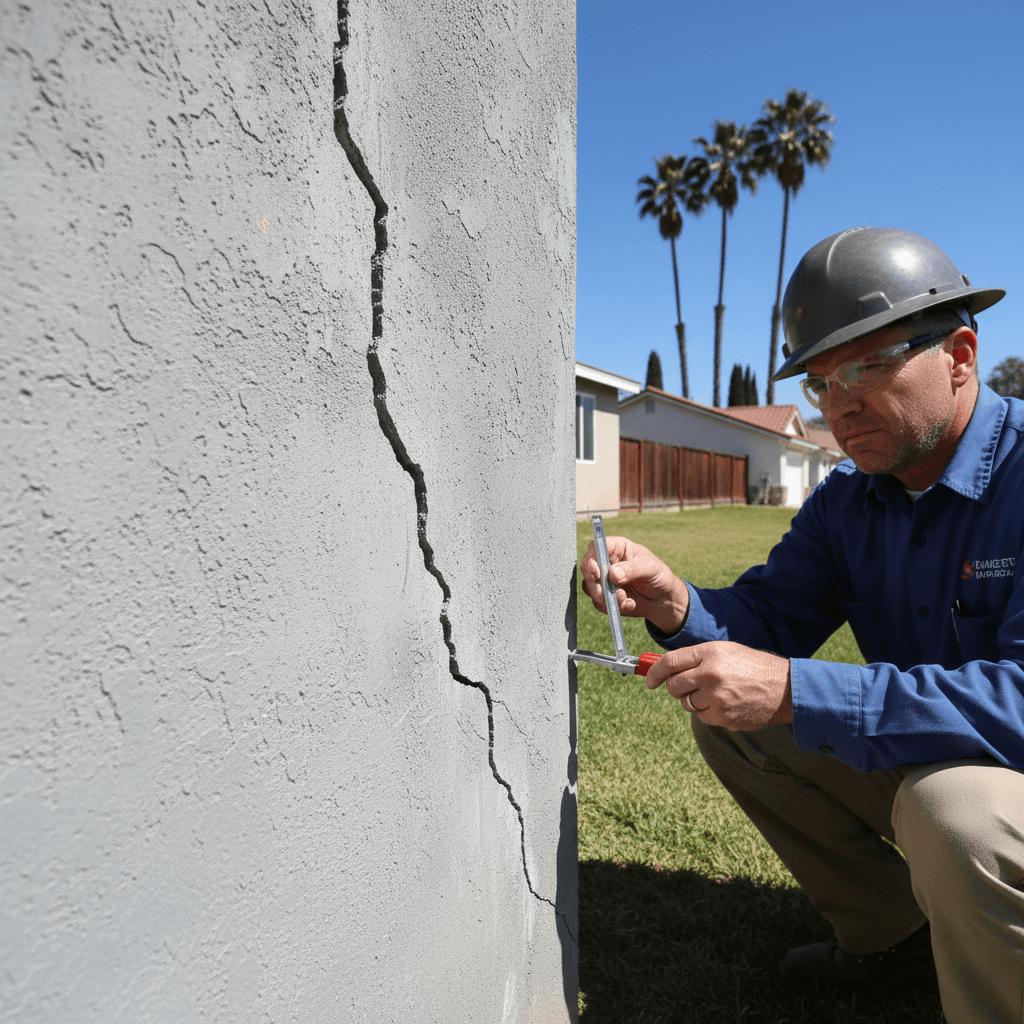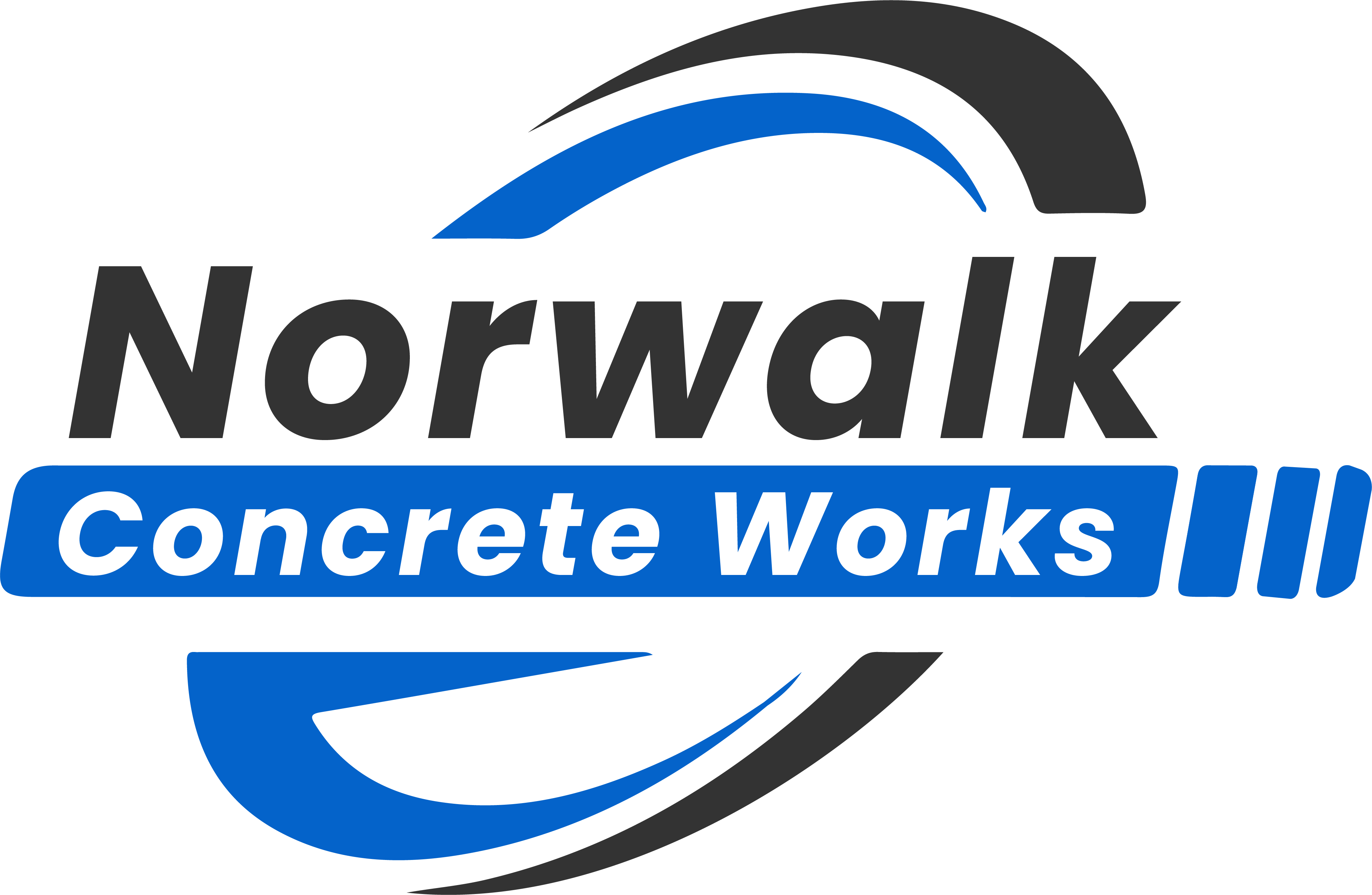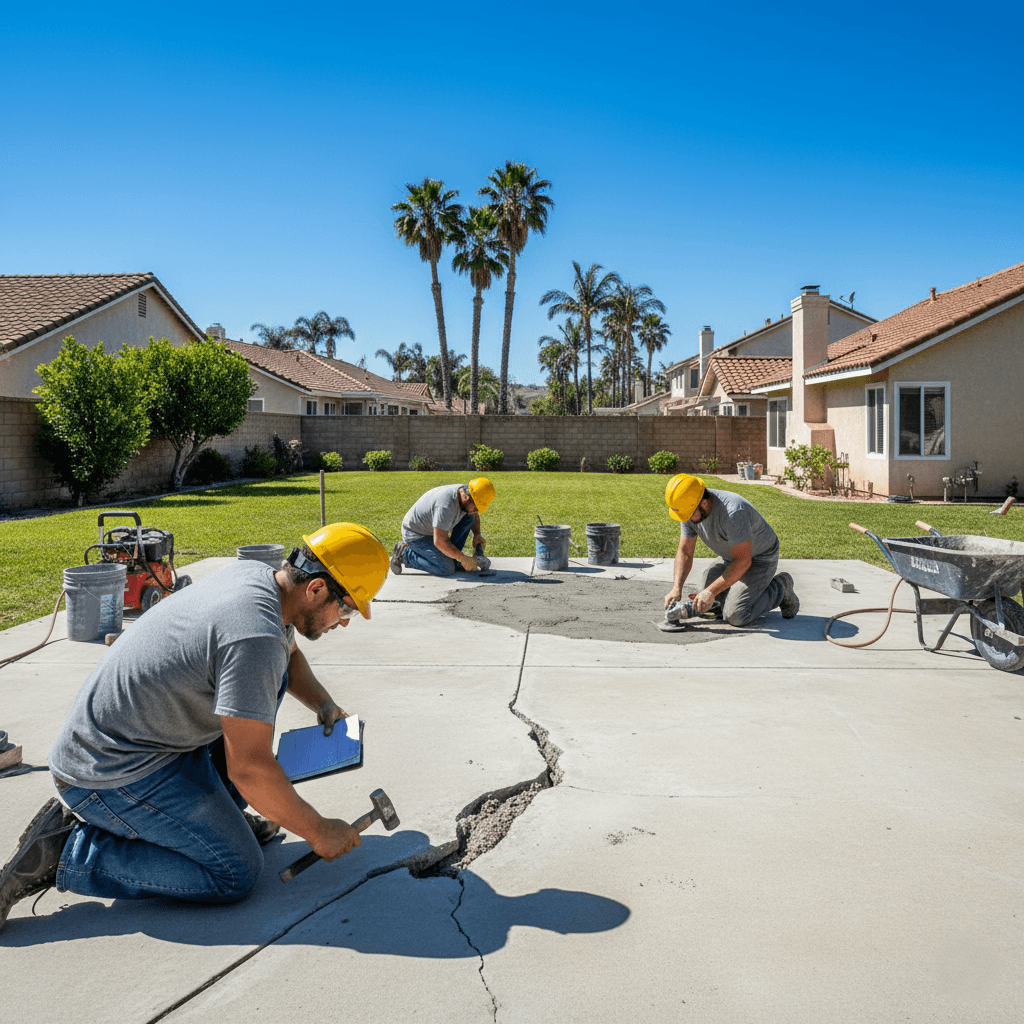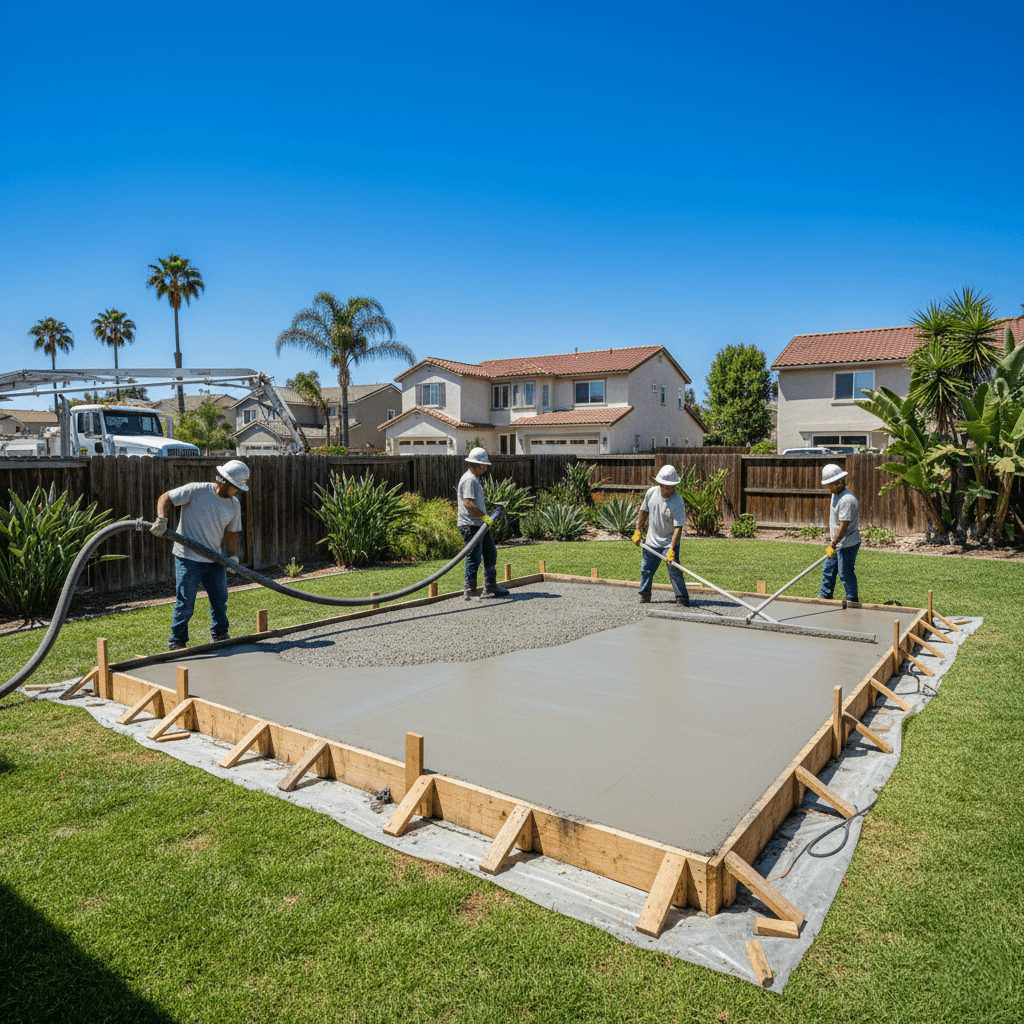
Norwalk Foundation Repair: Don’t Ignore Small Cracks
Concrete Foundation Repair Norwalk
Distinguishing between normal settlement cracks and serious foundation damage requires understanding warning signs that indicate structural problems requiring immediate attention. Many Norwalk homeowners dismiss foundation cracks as minor cosmetic issues, not realizing that certain crack patterns signal significant structural concerns that worsen over time. Professional concrete foundation repair becomes essential when cracks exceed specific size thresholds, display particular characteristics, or accompany other symptoms like water intrusion or structural movement. Foundation crack repair costs increase dramatically when problems progress beyond early intervention stages, making timely assessment crucial for protecting property values. Recognizing critical warning signs helps homeowners make informed decisions about when professional evaluation becomes necessary versus when monitoring suffices.

Understanding Normal vs. Concerning Foundation Cracks
Hairline cracks less than 1/8 inch wide typically result from normal concrete curing and settlement processes that occur within the first two years after construction. These minor cracks often appear as straight vertical lines and remain stable over time without growing wider or longer. However, structural foundation damage manifests through cracks exceeding 1/8 inch in width, displaying irregular patterns, or showing signs of active movement.
Foundation warning signs include cracks that widen at one end, follow stair-step patterns in block walls, or run horizontally across foundation walls. These patterns indicate differential settlement, soil pressure, or structural stress that requires professional evaluation. Cracks accompanied by moisture intrusion, unusual odors, or visible displacement signal the immediate need for concrete foundation problems assessment by qualified specialists.
Critical Crack Characteristics Requiring Immediate Attention
Horizontal foundation cracks represent the most serious type of foundation damage, indicating dangerous lateral soil pressure against foundation walls. These cracks suggest potential wall failure and require immediate professional intervention to prevent catastrophic structural problems. Horizontal cracks wider than 1/4 inch pose significant safety concerns and may necessitate emergency stabilization measures.
Stair-step cracks in concrete block or brick foundations follow mortar joints in stepped patterns, indicating uneven foundation settlement that threatens structural integrity. Diagonal cracks running at 45-degree angles often suggest differential settlement where one section of the foundation moves while another remains stable. Foundation settlement issues progress rapidly under California’s seismic conditions, making early intervention critical for successful repairs.
Water Intrusion and Moisture-Related Warning Signs
Active water seepage through foundation cracks creates multiple problems, including structural damage, mold growth, and indoor air quality issues. Even small cracks can admit significant moisture during Southern California’s occasional heavy rainfall periods, leading to progressive deterioration of concrete and surrounding materials. Water intrusion often indicates crack movement that has compromised the foundation’s waterproof integrity.
Efflorescence, appearing as white chalky deposits on concrete surfaces, signals water movement through foundation walls even when active leaks aren’t visible. Persistent musty odors, damp spots, or mineral staining around foundation areas suggest ongoing moisture problems requiring immediate attention. Basement foundation cracks that admit water during rain events need professional sealing to prevent extensive damage.
Accompanying Structural Movement Symptoms
Foundation problems rarely manifest as isolated cracks but typically accompany other structural symptoms throughout the home. Doors and windows that stick, bind, or show gaps around frames indicate foundation movement that affects the entire structure. Uneven floors, particularly those that slope toward specific areas, suggest differential settlement beneath those sections.
Interior wall cracks, especially those appearing near door and window openings, often correlate with foundation movement and settlement issues. Exterior trim separation, chimney tilting, or gaps between different building materials signal foundation displacement requiring professional evaluation. These symptoms help distinguish between surface-level cosmetic issues and genuine structural foundation damage.
Geographic and Environmental Risk Factors
Norwalk’s location in seismically active Southern California creates unique foundation stress factors that accelerate crack development and progression. Properties near areas like the San Gabriel River face additional challenges from soil variations and seasonal moisture changes that affect foundation stability. Clay-heavy soils common throughout Los Angeles County expand and contract with moisture changes, creating ongoing pressure against foundation walls.
Homes built before modern seismic building codes may exhibit foundation vulnerabilities that manifest as progressive cracking over time. Properties in older neighborhoods around areas like Pioneer Boulevard often show foundation issues related to original construction methods and soil conditions. Foundation inspection needs increase for homes over 40 years old, particularly those showing multiple minor cracks or subtle structural symptoms.
Professional Assessment and Diagnostic Procedures
Qualified foundation specialists use specialized equipment and techniques to evaluate crack severity, underlying causes, and repair requirements. Professional assessments include soil condition analysis, structural load evaluation, and comprehensive crack pattern documentation. Experienced contractors distinguish between surface-level cosmetic issues and serious structural problems requiring immediate intervention.
Diagnostic procedures often reveal hidden damage not visible during casual inspection, including internal concrete deterioration or soil movement beneath the foundation. Foundation repair services utilize advanced techniques like ground-penetrating radar or structural monitoring systems to assess ongoing movement and predict future problems. Professional evaluation provides detailed repair recommendations and cost estimates for informed decision-making.
Cost Implications of Early vs. Delayed Intervention
Minor foundation crack repair costs typically range from $250 to $800 per crack when addressed promptly through epoxy injection or professional sealing methods. However, delaying repairs allows problems to progress into major structural issues costing $5,000-25,000 or more for comprehensive foundation stabilization. Early intervention prevents secondary damage to flooring, walls, and other structural elements affected by foundation movement.
Foundation repair costs in Southern California reflect regional labor rates and material expenses, making early detection particularly valuable for budget planning. Comprehensive foundation repairs may require house lifting, underpinning, or wall reinforcement that significantly exceeds simple crack repair costs. Insurance coverage rarely includes foundation repairs, making cost control through early intervention especially important for homeowners.
Monitoring and Documentation Strategies
Establishing systematic monitoring procedures helps track crack progression and determine when professional intervention becomes necessary. Photograph cracks with measuring devices for scale reference, documenting width, length, and any changes over time. Monthly monitoring during the first year after crack discovery helps establish whether cracks remain stable or continue growing.
Maintain detailed records, including dates, measurements, weather conditions, and any associated symptoms like water intrusion or structural changes. This documentation provides valuable information for professional assessments and helps contractors understand crack development patterns. Regular monitoring allows homeowners to detect acceleration in crack growth that signals an urgent need for concrete foundation repair.
Prevention and Long-term Foundation Protection
Implementing proper drainage management around foundation perimeters helps prevent many crack development scenarios. Ensure gutters and downspouts direct water away from foundation walls, and maintain proper grading that slopes away from the house. Address landscaping issues like large trees with extensive root systems that can create soil movement and foundation pressure.
Regular professional inspections help identify developing problems before they require major repairs. Maintain consistent soil moisture around foundations through appropriate irrigation practices that prevent extreme drying and expansion cycles. Quality initial construction and ongoing maintenance provide the best protection against serious foundation problems requiring expensive repairs.
At Norwalk Concrete Works, we provide comprehensive foundation evaluation services to help homeowners distinguish between normal settlement cracks and serious structural issues requiring immediate attention. Our experienced team offers professional concrete foundation repair solutions throughout Norwalk and surrounding communities, ensuring your home’s structural integrity and long-term stability through expert diagnosis and quality repairs.


